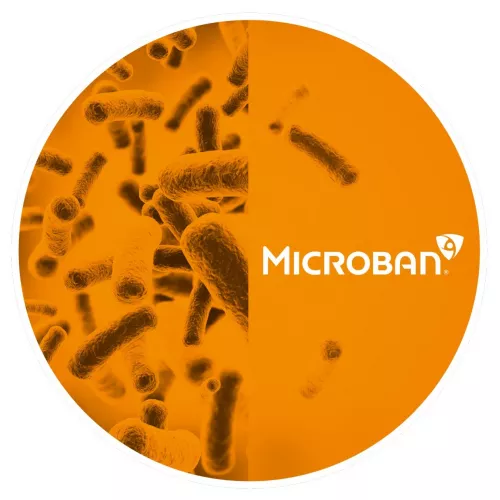Are Antimicrobials Safe?
As with any functional chemistry, it is important to weigh the risk vs. benefit. Many antimicrobials can be used at safe levels, but it is important to entrust in a provider that performs the right level of due diligence with their ingredients.
Embedded antimicrobials that make no direct contact with the skin or food (e.g., construction materials) are of least concern as they are unable to leach out of the material. Embedded antimicrobials that make direct contact with the skin (e.g., textiles) and food (e.g., cutting boards) have an extra layer of regulation to ensure that they are safe for use. Liquid disinfectants such as those used to clean hospitals and homes are more likely to come in direct contact via inhalation, digestion, or absorption. However, they go through an even more rigorous process that establishes their risks, as indicated by the use and safety language on the product packaging.
To summarize, antimicrobials have been used safely for many years and continue to provide the benefits of product protection from spoilage, malodor, and contamination. In most geographical locations around the world, there are regulations that govern the particular use levels and applications for antimicrobial technologies. It is important to work with an organization that can guide you effectively so that your use of antimicrobial technology is fully compliant in both the geographies in which you manufacture and in which you distribute the finished product. The key is to partner with an antimicrobial specialist that has experience in handling active ingredients and can provide guidance on how to successfully engineer them into materials.

What Are the Benefits of Antimicrobials?
The use of antimicrobials dates back millennia when Egyptians used silver-embedded storage vessels. Today, antimicrobials have expanded their benefits greatly and can be found in a multitude of applications, from medical carts and washing machines to door handles and more.
Antimicrobials are imperative in the healthcare industry as part of a system of care that includes regular hand washing, use of proper disinfecting agents, use of UV and other sterilization technologies, and strategic use of embedded antimicrobial technology in various applications to reduce the chain of infection and protect surfaces from transient pathogens. But, while protection from pathogenic microorganisms is important, benign microorganisms can also be problematic in any number of applications.
Product discoloration, reduced integrity, altered aesthetics, and odor are just some of the damaging effects of microorganism growth. With the use of antimicrobials, products can maintain their original usage and appearance for longer, while reducing the opportunity for potentially pathogenic organisms to grow and spread. Antimicrobials also increase product durability and shelf-life, helping contribute to sustainability by supporting a circular economy.
Do the Benefits of Antimicrobial Treatments Outweigh Any Negative Implications or Risks?
Science tells us that there are few risks involved in using antimicrobials embedded into materials. There is currently no evidence to show that embedded antimicrobials impart antibiotic resistance.
The fate of antimicrobials into our waste streams and environments has long been a concern with some bad actives being banned due to environmental toxicity concerns. On balance, antimicrobial treatments protect the longevity of the product and provide assurance to the user that the product will remain hygienic throughout its usage. This ultimately encourages reuse and discourages premature disposal. In addition, the use of antimicrobial treatments in product protection applications can enable higher post-consumer and post-industrial waste streams in the production feedstocks for products, can help lower landfill loading by enabling longer product service life, and can help ESG and sustainability initiatives in many other meaningful and positive ways.
Can Antimicrobials Be Specific to Different Microorganisms?
Yes. Many antimicrobials have differing levels of performance depending on the type of microorganism. We usually categorize them into being effective against specific groups such as enveloped viruses, Gram-positive bacteria, Gram-negative bacteria, fungi, and so on. For example, silver is known to have a high level of efficacy against bacteria, whereas zinc is renowned for having strong antifungal properties.
Is Microban Triclosan?
No, Microban is not triclosan. Microban offers a full range of technology solutions that draw from over 25 different active technology families. Read below to find out more about triclosan.
What Is Triclosan?
Triclosan is a highly effective antibacterial and antifungal preservative that has historic applications in a variety of products across a number of industries. It was first developed in the 1960s for hospital use to prevent bacterial infections and was soon added to products as an antimicrobial preservative to protect against the growth of bacteria, mold, and mildew.
Safety Evaluations of Triclosan - Europe
Triclosan’s use in the global arena has come under challenge in recent years. The European Biocidal Products Regulation (BPR) was implemented in 2012 with the task of evaluating and assessing all pesticides and biocides available on the European market against a set of criteria including physical chemical hazards, human health, and environmental hazards as well as efficacy in use. A new parameter under the human health risk assessment and evaluation of the BPR is Endocrine Disruption. Under the 2014 substance evaluation decision on triclosan, sufficient information was presented to indicate a hazard of endocrine disruption potential, which is an exclusion criterion under the BPR, as well as an environmental concern for triclosan released to surface waters. As a result, triclosan was removed from Article 95 and is no longer permitted for sale as an antimicrobial material preservative in the EU.
Safety Evaluations of Triclosan - USA and Canada
Similar risk evaluations were performed on triclosan in the United States and Canada, which are regions where pesticide regulations are assessed on overall risk; not only on the hazards of the substances but also on exposure potential. A risk-based approach to pesticide/antimicrobial regulations takes into consideration the likelihood of exposure to the substance of concern based on the use patterns of the items containing the substance. Restrictions on triclosan-containing personal care products (e.g. toothpaste) were implemented in North America because of the higher risk potential in oral exposure as well as release to the environment through household wastewater. There was also a voluntary withdrawal of triclosan product registrations in Canada under the Pest Control Products Act/Regulations (PCPA/PCPR) such that triclosan-containing antimicrobial products were voluntarily withdrawn from the market by the suppliers.
Triclosan is still registered and permitted for use as a material preservative in built-in applications in the United States under the US Environmental Protection Agency (EPA)’s Federal Insecticide Fungicide and Rodenticide Act (FIFRA), the body that governs the registration and sale of pesticide products. These products are heavily regulated by the EPA and assessed regularly to ensure that the product labels are consistent with the EPA’s determination of safe use of the chemistry in its intended applications. As such, the EPA understands that the use of triclosan in applications that minimize release also helps to control exposure and therefore lessen the risk to the user to levels that are consistent with the safe use of triclosan in specific scenarios.
Does Microban Still Offer Triclosan?
Microban no longer offers triclosan as a product for utilization in new commercial launches. Our existing technology portfolio includes technologies based on silver or zinc, non-heavy metal alternatives, and naturally occurring substances. Our technical teams work with our valued customers to help develop an effective treatment program that suits customer needs while prioritizing safety and efficacy in use.
For more information on our technology portfolio, please contact Microban today.
IMPORTANT!
Due to regulatory differences, the performance claims related to Microban® technologies that are referenced in this article may not be valid for use in all countries or regions. In some cases, legal regulations may restrict or prohibit the selection of available Microban® technologies, the field of application for which they are approved, and/or the permissible claims for finished goods containing Microban® technologies. For more information, view our official regulatory statement or contact us.


